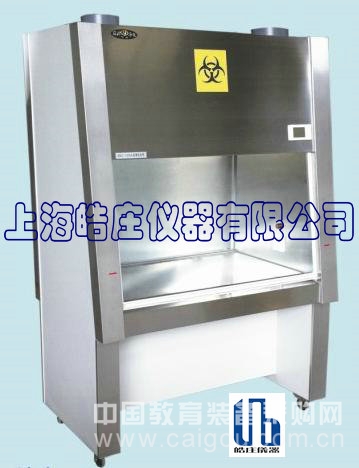
Using a biological safety cabinet (BSC) is essential for ensuring both operator and environmental protection when handling potentially hazardous materials. Proper use of the BSC minimizes the risk of contamination and maintains a controlled, sterile working environment. Here's a detailed guide on how to use it effectively:
1. **Preparation Before Use**
Before starting any experiment, make sure all necessary tools, reagents, and equipment are placed inside the biosafety cabinet. Avoid frequently moving your arms in and out, as this can disrupt the laminar airflow. It’s also important to wipe down all items with 75% alcohol before placing them inside to reduce the risk of contamination.
2. **Initial Setup and Airflow Stabilization**
Turn on the fan and allow it to run for at least 5–10 minutes to ensure the air inside the cabinet is purified and the airflow is stable. When entering the cabinet, slowly extend your arms into it for at least one minute to let the airflow settle before beginning your work.
3. **Organizing Items Inside the Cabinet**
Keep only essential items inside the cabinet. Divide the space into three zones: clean, semi-contaminated, and contaminated. Ensure that these areas do not overlap and that items are placed as far back as possible without blocking the air intake. This helps maintain consistent airflow and prevents cross-contamination.
4. **Proper Workflow and Safety Measures**
Always perform tasks from the clean area to the contaminated area to prevent mixing of materials. To manage potential spills, place a disinfectant-soaked towel or gauze on the work surface, but never cover the cabinet’s grille, as this could interfere with airflow.
5. **Avoid Open Flames**
Never use an open flame, such as an alcohol lamp, inside the biosafety cabinet. The heat generated can disrupt the airflow and may damage the HEPA filter, which is critical for maintaining a safe environment.
6. **Minimize Movement and Door Usage**
Avoid unnecessary movement behind the work area and quickly close the cabinet door after opening it. Any prolonged exposure can cause instability in the airflow, increasing the risk of contamination.
7. **Maintain Correct Posture and Actions**
Keep your face above the work window and avoid opening the glass panel during operation. Perform all actions gently to prevent turbulence in the airflow, which could compromise the integrity of the cabinet.
8. **Regular Maintenance and Monitoring**
The biosafety cabinet should be inspected and maintained regularly by trained personnel. If you notice any malfunction, stop using it immediately, take appropriate precautions, and report the issue to the relevant staff.
9. **Post-Use Procedures**
After completing your work, close the glass window and let the fan run for 10–15 minutes to clear any remaining airborne particles. Then, turn on the UV light for 30 minutes to sterilize the interior. Make sure to turn off the audio system during UV operation, as UV light can be harmful to human eyes and skin.
10. **Cleaning and Disinfection**
At the end of each session, clean the interior of the cabinet with 2% sodium hypochlorite (commonly known as 84 disinfectant). Wipe the exterior daily with 1% 84 disinfectant to maintain hygiene. Always dispose of used materials properly after disinfection to prevent the release of pathogens into the environment.
By following these guidelines, you can ensure the effective and safe use of a biological safety cabinet, protecting both yourself and the surrounding environment.
Ball Pen And Eraser
Ball Pen,Ballpoint Pens,Pencil Eraser,Tpr Eraser
NINGBO MACEY EDUCATION PRODUCT CO.,LTD , https://www.maceycreative.com

